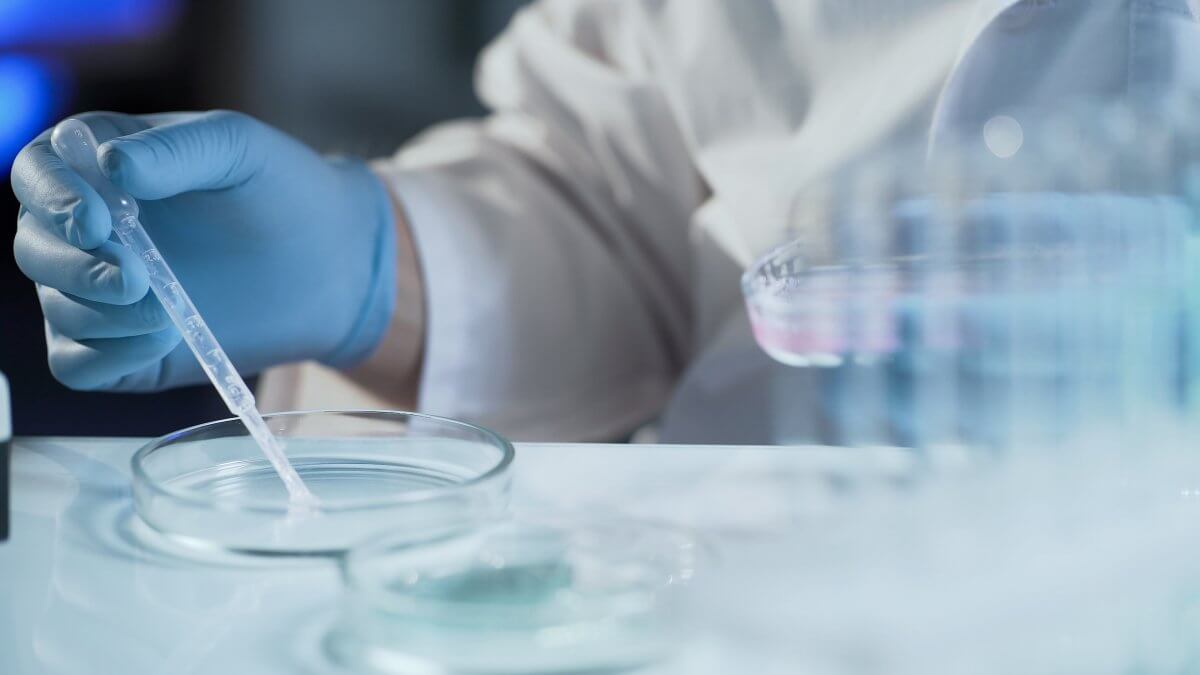Making the right nutritional choices during IVF can influence everything from hormone balance to embryo quality.
By understanding how different dietary approaches impact IVF outcomes, you can make informed decisions that support embryo health and long-term family-building success.
If you’re creating embryos now, we can help you prepare for what’s next—matching you with a fully screened surrogate. Ready to plan ahead? Contact our surrogacy specialists.
In this guide, we’ll explore the keto diet for IVF, what the research says, potential risks, smarter alternatives, and what to do when IVF doesn’t go as planned.
Disclaimer:This article is for informational purposes only and is not intended to serve as medical or nutritional advice. Always consult with a qualified healthcare provider, such as a registered dietitian or fertility specialist, before making dietary changes related to IVF or fertility treatment.
Should You Try the Keto Diet During IVF?
The keto diet for IVF is gaining attention for its potential to regulate blood sugar and support hormone balance—especially in people with PCOS or insulin resistance. In some cases, low-carb diets may improve ovulation and egg quality.
However, for many intended parents, particularly those creating embryos for surrogacy, the risks may outweigh the benefits. Keto’s restrictive nature can increase inflammation, reduce key nutrients like folate and magnesium and add stress during a critical phase of embryo development.
Most fertility experts recommend a balanced, anti-inflammatory diet that supports cellular health and embryo viability. Working with a fertility nutritionist can help you choose a plan that fits your body and your IVF goals.
Learn more about how you can prepare for successful egg retrieval.
Is Keto Good for PCOS?
For people with polycystic ovary syndrome (PCOS), a common cause of infertility, the keto diet may offer short-term benefits.
By significantly reducing carbohydrate intake, keto can help stabilize blood sugar, lower insulin levels and reduce circulating androgens, which may improve ovulation and hormonal balance in some individuals.
However, most fertility specialists caution that keto’s effectiveness depends on the individual and that it’s not always appropriate during IVF. Keto’s restrictive nature may compromise nutrient intake during the critical preconception window.
A moderate, balanced approach—often modeled after the Mediterranean diet—may offer similar metabolic benefits for PCOS, with fewer risks and greater nutritional support for embryo development.
What is the Keto Diet for IVF?
The Ketogenic diet, most commonly known as the keto diet, is a low-carb, high healthy-fat diet that forces the body to burn fat for energy instead of using carbohydrates.
Many people choose the keto diet, because it includes more of the high-fat foods people tend to prefer, and has less restrictions on what they cannot eat.
Some of the most common foods consumed on the keto diet for IVF include:
- Beef, pork, lamb, and other fatty meats
- Tuna, Mackerel, salmon, and other fatty fish
- Nuts and seeds
- Full-fat cheeses
- Olive oil
- Berries and tomatoes
- Non-starchy vegetables such as kale, collard greens, broccoli, zucchini, and peppers
- And more
What the Research Says About the Keto Diet and IVF Success
While small studies suggest low-carb diets may help people with PCOS improve ovulation and hormone balance, these benefits are more relevant to natural conception than embryo creation for surrogacy.
When looking at direct IVF outcomes like egg quality or embryo development, evidence supporting keto over balanced diets is lacking. In fact, overly restrictive eating may reduce key nutrients essential to successful fertilization and embryo viability.
That’s why most fertility experts recommend balanced, anti-inflammatory diets rich in greens, grains and healthy fats, over extreme plans. For intended parents using IVF, especially those preparing embryos for surrogacy, working with a fertility nutritionist ensures your diet supports your goal, not complicates it.
Risks of the Keto Diet During IVF
The keto diet for IVF may seem like a promising way to regulate hormones and support fertility, but it comes with important risks—especially for intended parents creating embryos for surrogacy.
- Inflammation: High saturated fat intake, common in poorly balanced keto plans, can trigger inflammation, which may disrupt the hormonal environment IVF relies on.
- Hormonal instability: Dietary changes, especially when carb intake drops, can send signals that the body is under stress. This can suppress key reproductive hormones, affect ovarian stimulation outcomes and potentially lower estrogen levels.
- Micronutrient deficiencies: Keto often lacks essential IVF-supportive nutrients like folate, magnesium, iron and vitamin D. These play vital roles in egg maturation, fertilization and early embryonic development.
While some patients with PCOS may benefit from low-carb strategies, keto is not a one-size-fits-all solution. For IVF and embryo creation, especially in preparation for gestational surrogacy, a balanced, nutrient-dense approach is usually safer and more effective.
Better Alternatives: Fertility Nutrition That Supports IVF
While the keto diet for IVF is gaining popularity, it may not be the best fit for most intended parents—especially those creating embryos for surrogacy.
Keto can support hormone balance in some patients with insulin resistance, but its restrictive nature poses risks like inflammation and nutrient gaps that could impact embryo quality.
Instead, fertility experts often recommend the Mediterranean diet or other balanced, anti-inflammatory approaches.
These diets prioritize whole foods like leafy greens, fish, legumes and healthy fats, offering steady energy, blood sugar stability and vital nutrients such as folate, antioxidants and omega-3s that support egg and embryo development.
Research links these nutrient-rich diets to better egg quality, fertilization outcomes and embryo morphology. Working with a fertility nutritionist can help tailor a plan that enhances your results without unnecessary restrictions.
What to Do If IVF Isn’t Working
After multiple IVF cycles, even with adjustments to medication or trying the keto diet for IVF, many intended parents still face disappointment—and the emotional and financial toll can be significant.
Repeated failure is more common than it seems, often due to factors like embryo quality or implantation issues. At some point, it’s natural to ask: Is it time for a different path?
If you’ve already created embryos, surrogacy may offer a way forward—allowing you to build your family without further physical strain. It’s not giving up; it’s choosing a new, empowered direction.
This isn’t giving up. It’s choosing a new way forward.
Why Surrogacy May Be a More Reliable Path to Parenthood
If IVF hasn’t gone as planned, surrogacy may offer a more dependable and emotionally sustainable way forward, especially if you’ve already created embryos.
With surrogacy, a fully screened surrogate carries your genetic embryo, offering greater control, fewer medical unknowns, and a professionally managed process from transfer to delivery. It also gives you space to heal from the emotional and physical strain of repeated IVF attempts.
For many intended parents, particularly those who’ve tried options like the keto diet for IVF or face medical barriers to pregnancy, surrogacy is not a last resort, but a clear path to parenthood.
How American Surrogacy Can Help
If you’re ready to move forward, American Surrogacy is here to walk that path with you—step by step. We’ve helped thousands of intended parents turn uncertainty into clarity and dreams into growing families.
Our team handles everything: from matching you with a fully screened surrogate, to coordinating legal and medical requirements, to offering emotional guidance throughout the process.
Whether you’ve just started exploring surrogacy or have frozen embryos ready for transfer, we’ll help you understand your options and move forward with confidence.
If you’re creating embryos through IVF, American Surrogacy can help you plan your next step. Fill out our form for a free consultation—we’re ready when you are.









